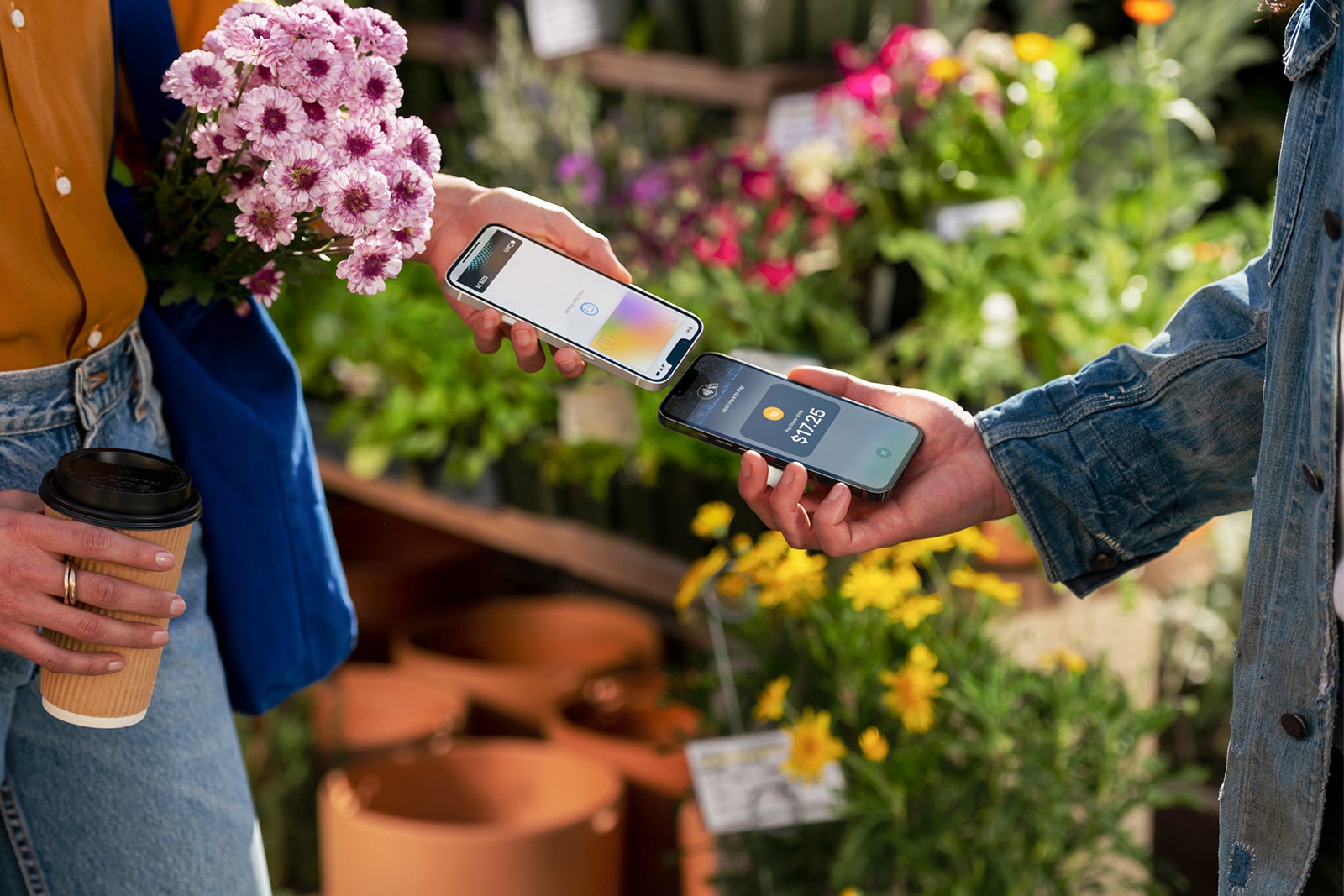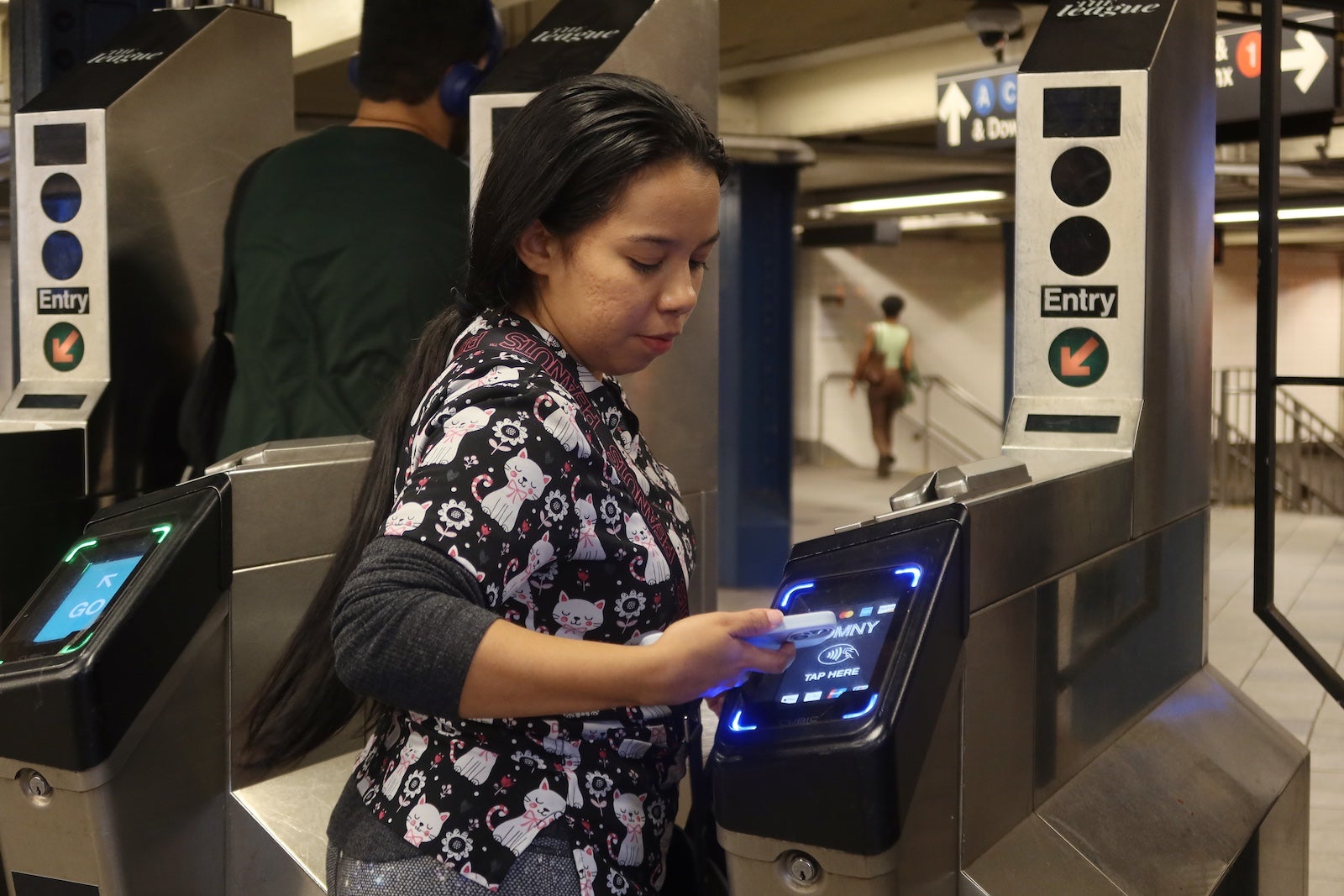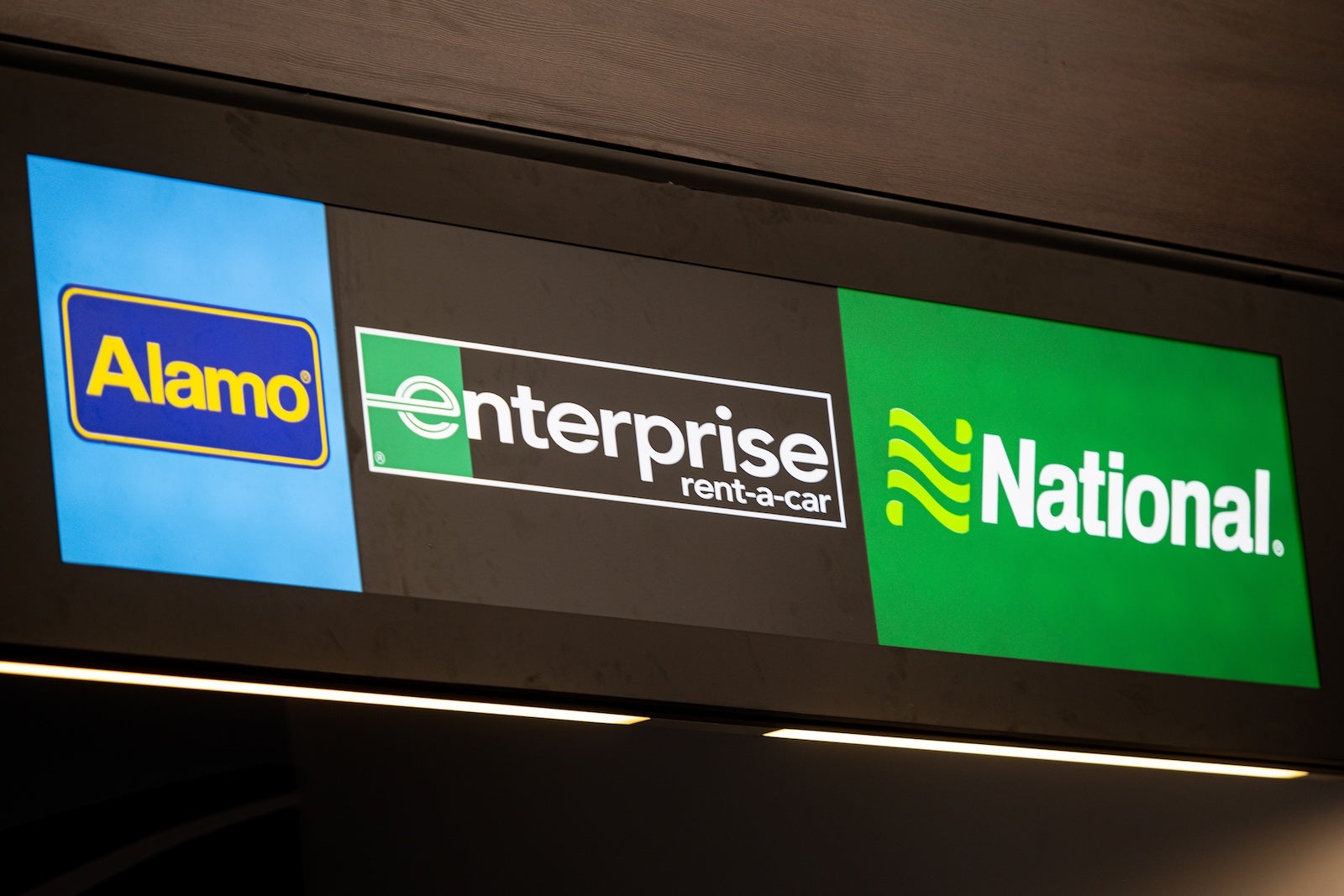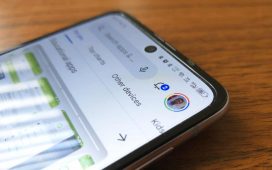What do the New York City subway and the tapas snack box on a United flight have in common? The primary way to pay for both is with a mobile wallet. (Unless, of course, you’re a top-tier elite member entitled to free onboard snacks when flying on United).
These days, mobile wallets are integral to the travel experience. From the airport to the plane to the hotel, more people are tapping their phones to pay than ever before.
It wasn’t that long ago when paying for the subway required lining up to purchase a transit card with cash. But things have changed dramatically as the reach of mobile wallets has expanded dramatically in recent years.
Now, one of the most ubiquitous mobile wallet brands is set for a major milestone. It’s been 10 years since Apple launched its Apple Pay mobile wallet service, which Apple says is now used by hundreds of millions of consumers across 78 countries and territories.
A decade later, Apple Pay — along with competing services that have come to market since the 2010s — have transformed the travel experience for many travelers, and the pace of innovation in the digital wallet space seems to only be getting faster.
With an industry-wide race to replace the physical wallet, tech companies continue to invest in their mobile wallet teams. For its part, Apple offered TPG an exclusive interview with Jennifer Bailey, vice president of Apple Pay and Apple Wallet, who helped travelers get a sense of the changes that are transforming the space.
Getting started was the hardest part
When Apple Pay first launched in October 2014, it faced an uphill battle convincing users and credit card issuers of the benefits of a digital wallet — likely mirroring challenges faced by its competitors during those first years of the services.
“The first challenge always when you introduce a new consumer service is helping consumers understand the benefits… and so we spent a lot of time in partnership actually with the banks and the [card] networks providing that education,” Bailey told TPG.
In addition to the education component, Bailey said Apple also needed to convince merchants to start accepting contactless payments. In fact, when Apple Pay launched, only 3% of merchants in the U.S. supported wireless payment technology, she said.
Daily Newsletter
Reward your inbox with the TPG Daily newsletter
Join over 700,000 readers for breaking news, in-depth guides and exclusive deals from TPG’s experts
Between the necessary consumer education and the need for merchants to adopt new contactless technology, Apple Pay wasn’t necessarily an instant hit. That only began to change, Baily said, as Apple “worked really hard on getting a great customer experience” — helping lay a foundation for the service to succeed as users’ become more comfortable with it.
Digital payments are at ‘scale’
Ten years later, Apple Pay now has “more than 90% coverage, maybe 95% coverage on the acceptance side [in the U.S.],” Bailey said.
With so many merchants accepting contactless payments and with over 11,000 banks and credit card network partners supporting Apple Pay, Bailey is confident that “we’ve reached scale” in terms of payments.
In fact, travelers have seen firsthand the adoption of contactless payments across the journey. Airlines across the board have introduced support for Apple Pay, while many hotel chains, airport concessionaires and event venues all support these mobile payments.
Transit keeps growing
With payments now “perfected,” Apple has turned its attention to other aspects of the mobile wallet experience. After all, Bailey’s mission is a “future where you’ll be able to leave your physical wallet at home.”
For travelers, that starts with the transit experience. Apple launched its digital transit experience in 2016 in Japan, and it’s since expanded to nearly 300 cities, over 40 of which offer proprietary transit cards directly in Apple Wallet.
For anyone who has used the Express Transit feature to take a bus or subway, the experience is quite seamless. You tap your phone to the turnstile and move forward with no extra authentication needed (though some users will need to use their face to “unlock” the payment).
Regarding Apple’s transit support, Bailey said that “the usage that we see there is just fantastic, and people absolutely love it.”
I’d go even one step further. The more people who tap to pay for transit, the better the boarding experience is for everyone. I remember the days when the MetroCard readers in New York often required multiple swipes to read a card, causing backups to enter the subway during peak hours. But with Express Transit payments, I can’t remember the last time I waited in line to pay for transit in New York.
State IDs are the next frontier
As Apple continues digitizing the wallet experience, the tech giant is now focused on other cards that aren’t your credit card, including state IDs.
The company just officially added California as the seventh state to support digital IDs in Apple Wallet, and “we have many more states in the pipeline.” Digital IDs first launched in 2022, and they’re now supported by Arizona, California, Colorado, Georgia, Hawaii, Maryland and Ohio. The TSA already accepts mobile IDs at many airports nationwide, and the number of digital-enabled ID readers keeps growing across U.S. airports.
“Having an authenticated digital ID in your wallet on your phone and on your Apple Watch is really profound. And it’s profound because if you think about one of the biggest challenges that we have in digital, it’s an authenticated ID, whether you’re talking about payments with fraud or scams, especially when you’re starting to see what’s happening with AI and deepfakes,” Bailey explained.
Much like it took some time to get credit card issuers on board with Apple Pay, Bailey expects a multi-year journey in rolling out digital state IDs. “It’ll be a long-term journey like we had with Apple Pay. It’s helping states understand how our approach is privacy-protected and highly secure, how we don’t have the data, and how we don’t keep any association with where you’re presenting your ID,” Bailey said.
With digitized state IDs, Apple isn’t keeping the technology proprietary. In fact, Bailey said that it’s using standard formats that are supported by competitor apps, such as Google Wallet.
“Not all solutions are created exactly equally, but in terms of being able to leverage [digital IDs] across entire state populations is important, and we support that,” Bailey acknowledged.
Digital car keys will come to rentals
In addition to digital credit cards, IDs and hotel keys, Apple is also working with over 30 car manufacturers (and counting) to create digital car keys in Apple Wallet.
For travelers, that last point is actually a harbinger of good things to come, according to Bailey, who shared exclusively with TPG that digital keys with soon enable contactless car rentals.
“Being able to book a car rental, confirm your authentication and identity… you can imagine that a car rental company is going to issue you a digital key, and that key could be used to unlock and use a car.”
Bailey didn’t share more about this future use case for car rentals, but it certainly sounds like it’s a priority for the Apple Wallet team.
Bottom line
Apple Pay has now been around for 10 years, and it’s only the start of the “aspiration” and “long-term vision to replace the wallet.”
To date, Apple says that it has perfected its digital payment technology. “The core technology we have is perfect,” according to Bailey.
As for what’s next, the company rarely teases new features before they’re formally announced, but Bailey did hint at a digitized rental car experience coming soon.
Beyond that, it’s anyone’s guess what Apple will launch next, but “what you’ll see us focus on is continuing to create acceptance and new user features.” And by the end of 2034, the odds are that we’ll all be using our mobile wallets in ways we could’ve never imagined today.
Related reading:














